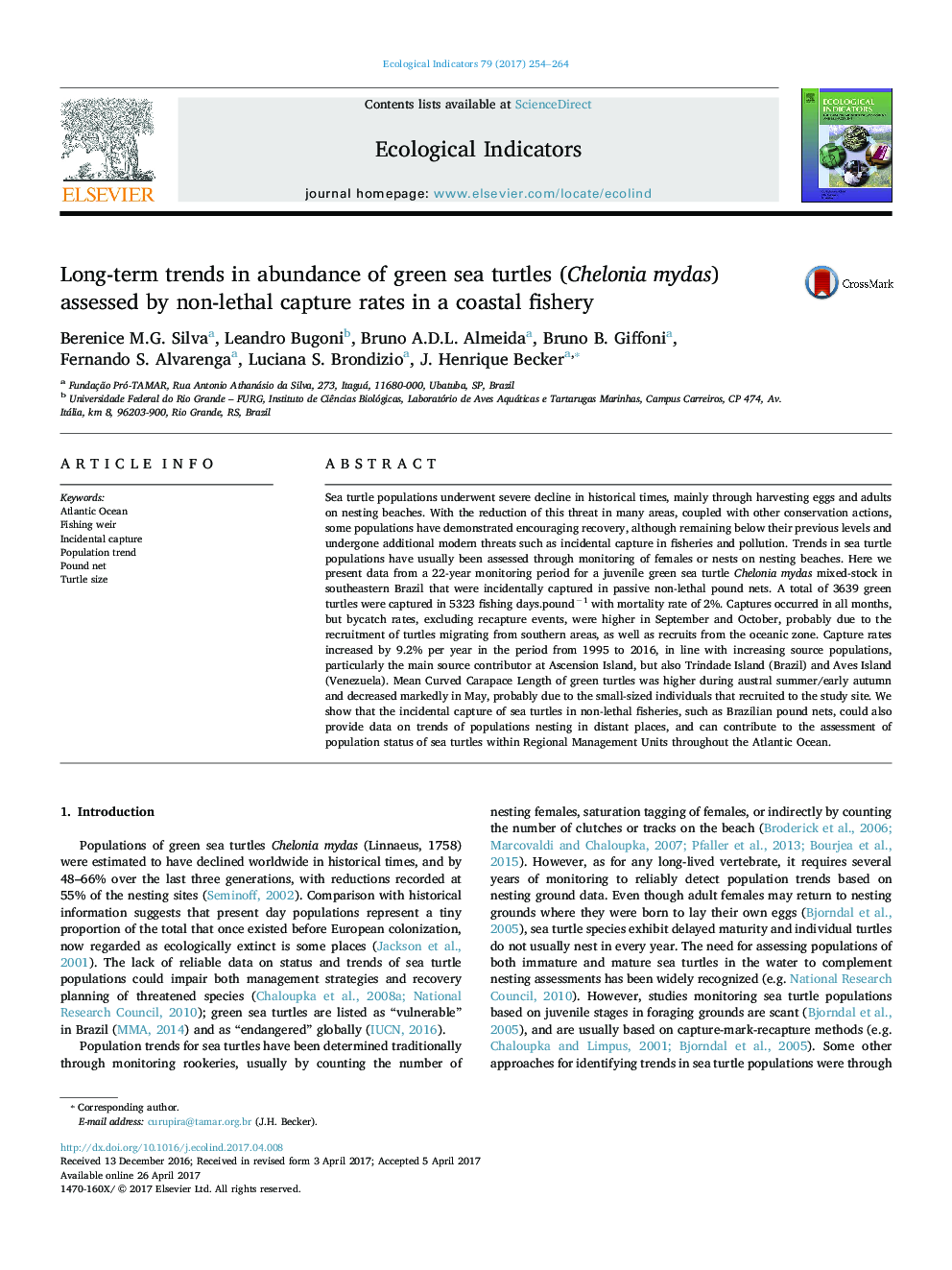| Article ID | Journal | Published Year | Pages | File Type |
|---|---|---|---|---|
| 5741772 | Ecological Indicators | 2017 | 11 Pages |
â¢Populations of sea turtles are monitored individually in nesting beaches.â¢Trends are hard to infer due to large interannual fluctuations and delayed maturity.â¢Several populations are simultaneously monitored earlier using juvenile mixed-stocks.â¢A mixed-stock in SW Atlantic Ocean shows comparable trends to those verified on nesting beaches.â¢Captures in coastal non-lethal fisheries provide long-term monitoring index.
Sea turtle populations underwent severe decline in historical times, mainly through harvesting eggs and adults on nesting beaches. With the reduction of this threat in many areas, coupled with other conservation actions, some populations have demonstrated encouraging recovery, although remaining below their previous levels and undergone additional modern threats such as incidental capture in fisheries and pollution. Trends in sea turtle populations have usually been assessed through monitoring of females or nests on nesting beaches. Here we present data from a 22-year monitoring period for a juvenile green sea turtle Chelonia mydas mixed-stock in southeastern Brazil that were incidentally captured in passive non-lethal pound nets. A total of 3639 green turtles were captured in 5323 fishing days.poundâ1 with mortality rate of 2%. Captures occurred in all months, but bycatch rates, excluding recapture events, were higher in September and October, probably due to the recruitment of turtles migrating from southern areas, as well as recruits from the oceanic zone. Capture rates increased by 9.2% per year in the period from 1995 to 2016, in line with increasing source populations, particularly the main source contributor at Ascension Island, but also Trindade Island (Brazil) and Aves Island (Venezuela). Mean Curved Carapace Length of green turtles was higher during austral summer/early autumn and decreased markedly in May, probably due to the small-sized individuals that recruited to the study site. We show that the incidental capture of sea turtles in non-lethal fisheries, such as Brazilian pound nets, could also provide data on trends of populations nesting in distant places, and can contribute to the assessment of population status of sea turtles within Regional Management Units throughout the Atlantic Ocean.
Graphical abstractDownload high-res image (175KB)Download full-size image
